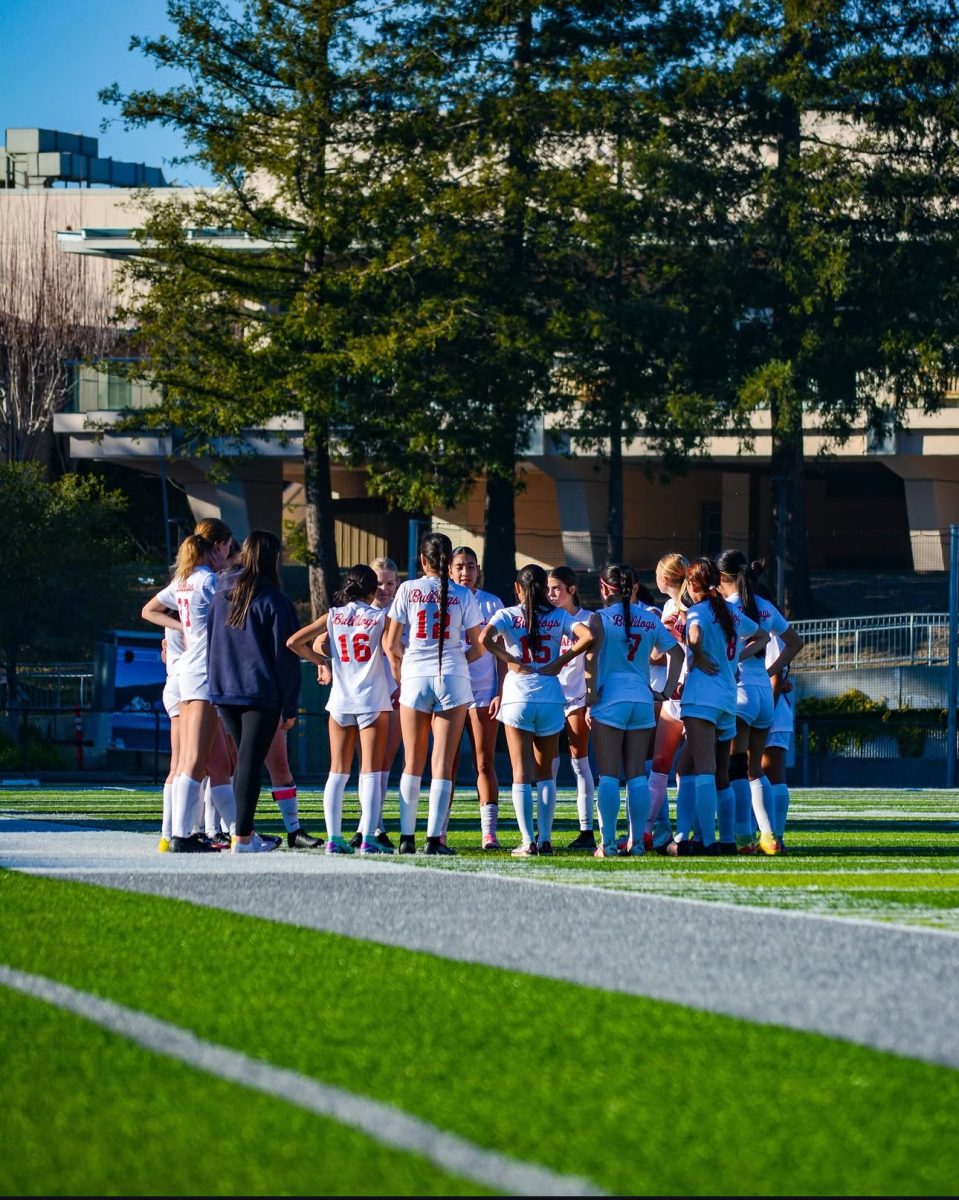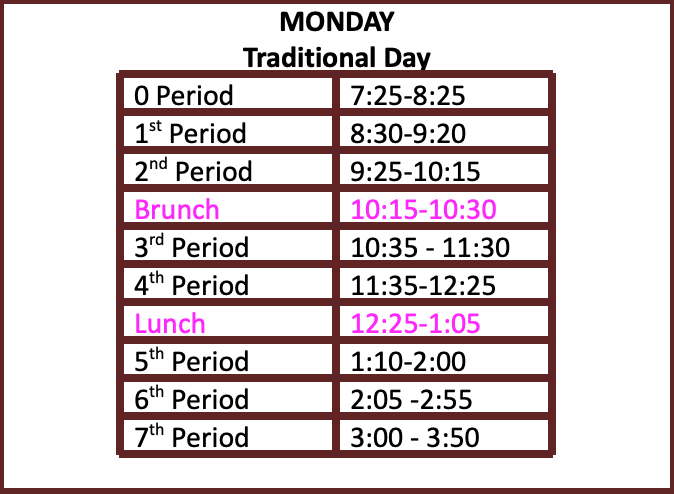SR’s Exhausting Traditional Days are the Wrong Way to Start a Week
December 9, 2022
In the 2019-2020 school year, San Rafael High School switched from a schedule of only A and B days to a new schedule with a new day on Mondays: the traditional day. This new schedule solved some problems, but brought a number of new ones. As SRHS teacher Gwen Pikkarainen put it, T days are “frantic and hectic” for both students and teachers.
Previously, students would have half of their classes each day, with each week picking up where the previous week ended. For example, if one week was an ABABA week, the next one would be BABAB. In the new schedule, every week is the same TBABA schedule, starting off with a Traditional day where students have all 7 classes.
Because A and B days release at different times, T days were added to make the release time on a given day consistent from one week to the next. This helped with a number of problems, such as synchronizing with TL, which was already on the new schedule, helping teachers schedule day care for their children, helping parents pick up siblings, and making after school staff meetings consistent.
This also benefited students doing sports, taking classes at College of Marin, going to tutoring, or going to other after school activities. The group that was most affected by this change were teachers who taught on only A days or only B days. Previously, they would come to school on different days from week to week, but in the new schedule, they come to school on the same days every week.
Before the change was made, SR teachers, staff, and WeAreSR! were consulted. 75% of teachers and 100% of staff and board members supported this change. When this change was announced, the announcement email from Glenn Dennis, the principal at the time, said that the “WeAreSR! board… requested that there be further discussion with students about the schedule.”
Since that change was made, T days have been quite successful in their intended effect. However, they have caused a whole new set of problems. Primarily, the stress and workload caused by having 7 classes in a day, which can be difficult for students and teachers.
Pikkarainen says, “By the time that my students in 7th period get here, they’re just tired.” She adds that she “didn’t mind” the old schedule, and T days are “an added variable” when it comes to scheduling classes.
One of the major problems with the workload on T days, aside from having homework from 7 classes assigned first thing after a weekend, is the time that students have to complete that work. In some classes students have homework due the next day, but in other classes students have homework due 2 days later with an advisory period in between. Compared to A and B days, where the students have at least 2 days, an advisory period, and sometimes a weekend before the work is due, these deadlines can be very imbalanced.
SRHS Senior Conner Tate says, “By my last class of the day, I’m tired and I’m ready to go home.” Senior Rai Zelinsky Jobe adds that they get an oversized amount of homework on T days.
One potential solution to this problem would be making T days strictly study time, with no instruction or new work being assigned, similar to the advisory-only Mondays that occurred during the Covid pandemic. This would give students time to talk to their teachers, get help with homework, and catch up on work at the beginning of the week. It would force teachers to have more instructional time in the remaining days of the week, but having distinct instruction and study periods would help students plan ahead and budget time to do work.
This suggestion may raise the concern that the class time on T days is necessary for the school to fill the instructional minutes requirements by the state. This is a valid concern, as the school can be punished if they do not meet the required number of instructional minutes. However, class time without direct instruction does count towards this quota, as advisory classes currently add to the school’s minutes.
Zelinsky Jobe agrees with this idea. “I’d rather [Monday] just be a work day,” they say.
Joe Dominguez, the new principal at SR, responded to this suggestion by saying, “If I were a teacher, that’s probably how I would spend [that time].” He indicated that the idea was worth considering.
David Snaith, a veteran SRHS math teacher, provides a different perspective. He says that “the disadvantages [of T days] far outweigh the advantages,” and by the end of the day, “we’re all exhausted.”
Snaith “liked our old schedule,” as he finds T days to be “less efficient” and he is “not able to teach as much.” He proposes that T days be removed from the schedule, and be replaced with “a rotating A/B day on Monday.” He also proposed an alternative solution, T days be moved to Friday, as in the current schedule, he is “so tired from Monday that it makes Tuesday difficult.”
One advantage of moving T days to Fridays is that students would have the weekend to work on any homework assigned. Another advantage is that it would push advisory, currently on Wednesday and Friday, earlier in the week, where it would benefit students more as they came out of the weekend with questions for their teachers.
Everyone that I talked to agreed that T days are an “an exhausting way to start the week,” as Snaith put it, and that something needed to change, whether it was removing them, changing them, or moving them to a different day of the week.






































